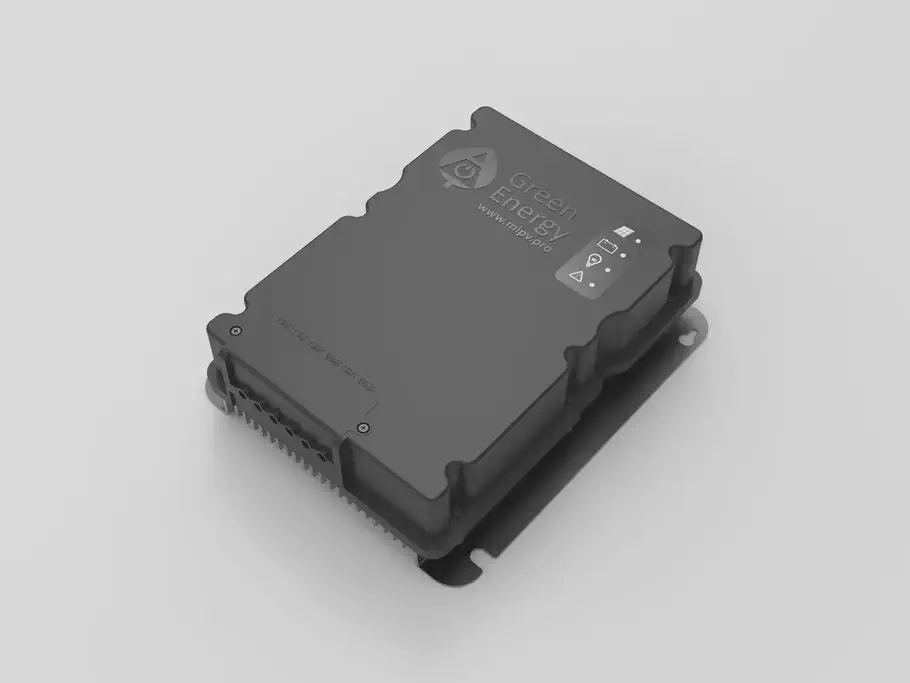I samarbejde med Green Energy Scandinavia A/S (herefter blot omtalt som Green Energy), har vi bygget en dataplatform som understøtter indsamling af data fra tusindvis af solceller i nær-realtid og giver Green Energy mulighed for at bygge deres egne maskinlæringsmodeller ovenpå denne platform.
Fakta om virksomheden
Green Energy Scandinavia A/S er den operationelle del af den norske moderkoncern Green Energy A/S. De arbejder med solcelleløsninger primært til transportbranchen overalt i verden, men også til fritidsbranchen. Virksomheden beskæftiger 37 ansatte og havde i 2022 en bruttofortjeneste på ~12 mio kr.Opsummering
Projektet
Efter indledende samtaler med Green Energy var projektet skudt i gang allerede efter 4 uger.
Udviklingsprocessen
Udviklingsteamet har været en blanding af udviklere fra Green Energy og Neurospace. Under udviklingsprocessen har der været flere workshops, hvor relevante stakeholders fra Green Energy har deltaget, for at afdække behov og ønsker til data platformen.
Hele forløbet har været designet efter SCRUM tilgangen, med Daily Standup og ugentlige ritualer, som har gjort det muligt for Neurospaces team hele tiden at sikre sig, at udviklingen forløb i tråd med Green Energys ønsker og behov. Desuden gav det vores data ingeniører mulighed for at stille opklarende spørgsmål og afklare tekniske udfordringer.
Rent praktisk har implementeringen af løsningen foregået ved at vi hos Neurospace har haft adgang til et repository i Green Energys Github organisation samt adgang til deres Google Cloud Platform projekt, hvilket har givet mulighed for løbende kode-review og integration af ændringer. Overleveringen har derfor foregået løbende, og Green Energy har haft mulighed for hele tiden at vurdere kvaliteten af vores løsning.
Da vi arbejder med kundedata, har Green Energy ligeledes hele tiden haft en ambition om, at have en høj datasikkerhed. Konkret er det foregået ved at følge best practices for de Google Cloud produkter vi anvender og “least-privilege IAM”-principperne, samt ved at holde security review med Green Energy, hvor vi i detaljer har diskuteret sikkerheden i løsningen. Vi har givet forslag til hvilke tiltag der vil kunne forbedre sikkerheden, samt hvilke punkter Green Energy skal være særligt opmærksomme på.

Kompleksiteten ved Data Platformen
Da tilgængeligheden af data fra enhederne kan variere pga. dårlig eller ingen internet forbindelse, har det været vigtigt at løsningen understøtter både streaming af data, men også batch processering af data. En enhed kan i princippet sagtens være ugevis uden internetadgang, for så pludselig, når der igen er internetadgang, at sende alt det i perioden lokalt opsamlede data på en gang. Der må ikke gå data tabt i denne proces, og det er derfor vigtigt at data platformen er fleksibel og skalerbar til det givne behov der opstår. Endelig skal data platformen understøtte, at enhederne kan være på forskellige software versioner, da opdateringen af disse sker løbende i produktion.
Det har desuden været vigtigt i hele forløbet at have skalerbarhed for øje, da antallet af enheder forventes at stige fra de indledende ~1000 enheder til ~60.000 enheder i løbet af det første år.
Roadmap og Machine Learning Business Cases
Lige fra begyndelsen af udviklingen af data platformen, har der været en klar strategi for Green Energy om, at de ønsker at have mulighed for at kunne anvende data platformen til Business Intelligence, opbevaring af data, som kan vises til den rette bruger via en app, og udvikling af relevante machine learning modeller til at forbedre deres produkt og services. Det har derfor været en velovervejet beslutning af Green Energy at gå med Google Cloud Platform til deres data platform og.
For at kickstarte anvendelsen af data, har vi sammen med Green Energy afholdt en AI-camp som blev brugt til at identificere use-cases og vurdere business casen på forskellige Machine Learning projekter. De identificerede projekter blev sat i prioriteret rækkefølge, og der blev for hver enkelt use-case defineret et Right-Data framework. Dertil fik Green Energy viden omkring hvilket data de skulle opsamle og med hvilken frekvens, samt hvordan denne skal opbevares i data platformen, for at man på kort tid kan komme i gang med at bruge data til noget værdiskabende.
Som følge af den nye viden omkring databehovet, udarbejdede Neurospaces team i samarbejde med key stakeholders fra Green Energy et Roadmap, som belyste hvornår hvilke processer skal igangsættes og udvikles, og hvornår det forventes at givne Machine Learning initiativer kan igangsættes. Med opdateringen af Roadmappet blev løsningsarkitekturen for data platformen og kravspecifikationen til charge controlleren ligeledes opdateret, og det nye Roadmap foreslår at opgradere den nuværende sikkerhedsløsning indenfor Zero Trust ved at implementere BeyondProd teknikker.

Efter projektets afslutning har vi indgået en serviceaftale med Green Energy omkring løsning af akut opståede problemer med data platformen.
Værdi for kunden
Vi har bygget en data platform til Green Energy som sikrer at de har:
- Kort time-to-market på data platformen, således at den kom “live” til ønsket dato
- En dataplatform som er tidssvarende, sikker og skalerbar, og som bygger på nuværende best practices på Google Cloud Platform
- Mulighed for at give kunder adgang til information om deres charge controllers, samtidig med at de ikke kan tilgå andres
- Adgang til nyeste data fra alle enheder som er forbundet til internettet
- Mulighed for nemt selv at bygge maskinlæringsmodeller og business intelligence ovenpå data platformen
- Identificeret Machine Learning use-cases og Right Data Framework for at kunne vælge korrekt dataplatform arkitektur og datakilder
- En billig og moderne dataplatform, som kan skaleres efter behov
- Et Roadmap for kommende Machine Learning projekter og opgradering af sikkerheden bag dataplatform med BeyondProd og Zero Trust